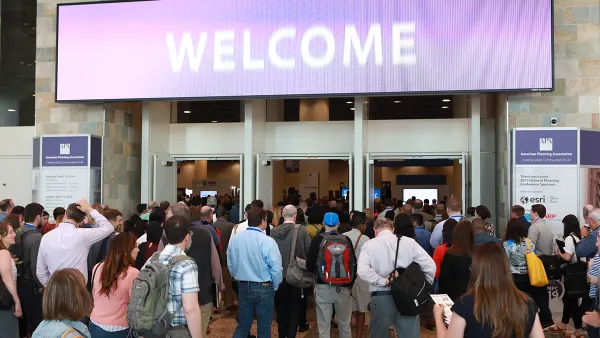How should a statement of purpose for a graduate school application differ from one for an undergrad program? This post outlines the elements of a compelling graduate school statement.

A few years ago I blogged about the statement of purpose in planning. I made five suggestions that are still relevant:
- Provide specific details about your past work, study, and activist experience preferably linking them to your plans for graduate work.
- Assume an intelligent reader.
- Balance experience, opinion, and a desire to learn.
- Show an interest in the program to which you are applying.
- Finally, keep it short. And make the key points stand out.
Over the past few years I’ve noticed statements improving in some ways. However, they also may be suffering from the explosion of advice on the internet, much of it presumably focused on the large group of people trying to enter undergraduate programs. Many schools require two statements of these undergraduate applicants—one about the applicant as a person (perhaps a general topic, maybe focused on a theme such as learning from mistakes) and one about the applicant's interest in a major (often linking it to life experiences and written in a novelistic or journalistic style). Such statements frequently start with anecdotes—even directly quoted conversations. I’ve been a reader of such statements and the format is well honed.
However, the graduate school statement of purpose is different in some fundamental ways:
- In a graduate school statement you should focus on what you want to learn. You are not trying to get a job or show you are smart (read the section in the earlier blog on assuming an “intelligent reader” for more about this). You are, instead, trying to show you want to build on existing knowledge and fill important gaps.
- The statement should read less like a novel or newspaper article and should have a more direct style. After one has read a hundred of them, even the undergraduate statements tend to feel canned and overly coached. When I was doing undergraduate admissions I longed for some directness so I would get a sense of the student rather than the team of adults presumably honing every word in a way that might work for a short story but felt artificial in a statement. In a graduate statement this is even more important. The University of Washington has reproduced advice from the Fulbright program that says something similar: http://depts.washington.edu/engl/advising/gradschool/SoP2.php
- As I outlined in the previous blog: “If you describe personal details make them relevant to your career trajectory. If you grew up in a single-parent family you'd perhaps mention it to demonstrate a motivation for your desire to study rental housing discrimination....” However, take care with such personal details—including where you have lived or traveled for leisure. It is only a very rare statement that uses such details in a compelling way.
After five and a half years of doing monthly blogs, I am now changing to one blog every 2 months.
For earlier advice on Getting into graduate school in planning see: how to decide if planning is for you, whether to get work experience before you go to grad school, find the right program, understand the basic philosophiesunderlying graduate education in planning, evaluate universities, use social media to find out about schools, apply, write a statement of purpose, obtain letters of reference, assess your undergraduate transcripts and your GREs, visit successfully, and decide which offer to take up including how to assess the real costs.

National Parks Layoffs Will Cause Communities to Lose Billions
Thousands of essential park workers were laid off this week, just before the busy spring break season.

Retro-silient?: America’s First “Eco-burb,” The Woodlands Turns 50
A master-planned community north of Houston offers lessons on green infrastructure and resilient design, but falls short of its founder’s lofty affordability and walkability goals.

Delivering for America Plan Will Downgrade Mail Service in at Least 49.5 Percent of Zip Codes
Republican and Democrat lawmakers criticize the plan for its disproportionate negative impact on rural communities.

Test News Post 1
This is a summary

Test News Headline 46
Test for the image on the front page.

Balancing Bombs and Butterflies: How the National Guard Protects a Rare Species
The National Guard at Fort Indiantown Gap uses GIS technology and land management strategies to balance military training with conservation efforts, ensuring the survival of the rare eastern regal fritillary butterfly.
Urban Design for Planners 1: Software Tools
This six-course series explores essential urban design concepts using open source software and equips planners with the tools they need to participate fully in the urban design process.
Planning for Universal Design
Learn the tools for implementing Universal Design in planning regulations.
EMC Planning Group, Inc.
Planetizen
Planetizen
Mpact (formerly Rail~Volution)
Great Falls Development Authority, Inc.
HUDs Office of Policy Development and Research
NYU Wagner Graduate School of Public Service






























